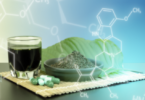Submitted by:
Amy Hendricks
Forensic Pathology Technician
Guy Garcia Denver, CO DOD: 12/17/13
This commentary is in response to the autopsy report associated with Guy Garcia. This autopsy was performed on 12/20/13. Fifteen months later, on 3/24/15 the toxicology result for the 7-hydroxymitragynine blood level was amended to read “indeterminate” rather than “positive”. It may or may not be relevant, but it would be interesting to understand what prompted this amendment and what the error may have been that led to its discovery. Also of note, the concentration of mitragynine is not quantified, merely identified as being present.
Mr. Garcia was taken to a hospital to be treated for what presented as a seizure. During the examination of the decedent’s skull it was noted that cerebral tonsillar herniation was evident and that the tissue involved was necrotic and sloughed. In addition to the damage in the cerebellum, the brainstem also displayed areas of hemorrhage and softening. It is unclear when the cerebral tonsillar herniation took place, but it had been long enough for the tissue involved to become necrotic and sloughed. It is also unclear at which point the multifocal hemorrhage and softening occurred in the brainstem. In the report, the brainstem and pons condition is attributed to Duret hemorrhage; most cases of which are fatal and usually follow trauma, abcess or tumor. Perhaps the necrotic tissue of the cerebral tonsillar herniation led to the subsequent “Duret hemorrhage” that took place.
The decedent had a stated history of cardiopulmonary arrest, had multiple recent pulmonary infarcts, a pulmonary embolism and yet another thrombosis in his prostate (prostatic venous plexus). Yet, cause of death is documented (as worded in the report) as severe hypoxic encephalopathy complicating apparent mitragynine toxicity.
It is important to realize Mr. Garcia’s history with cardiopulmonary arrest, the presence of thrombosis and the pulmonary embolism; any of which, could be fatal. Further, there is nothing “apparent” regarding “mitragynine toxicity”. Science has not proven that toxic levels of mitragynine exist, and the level of mitragynine in this case is not quantified.






